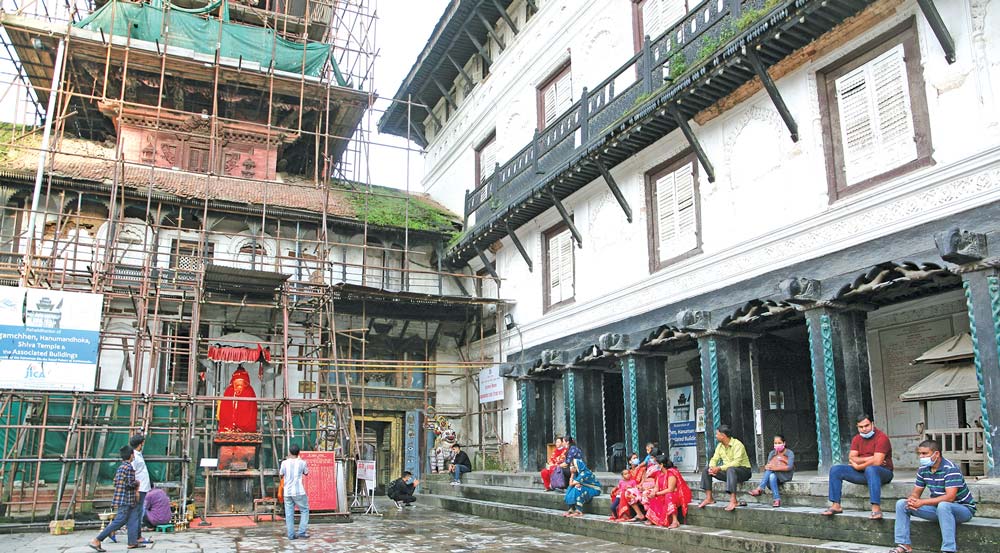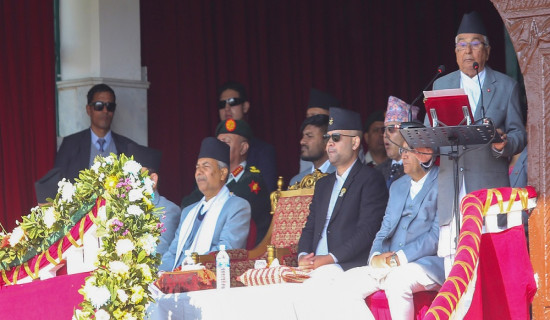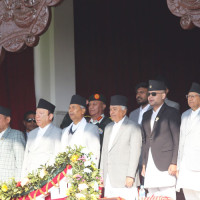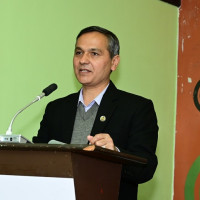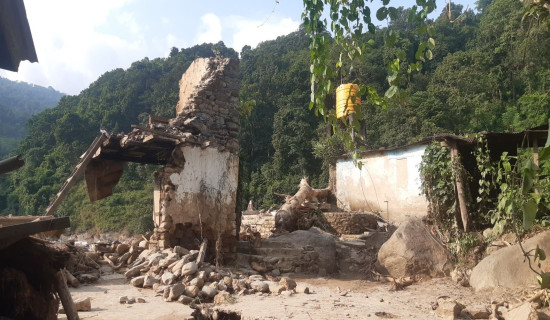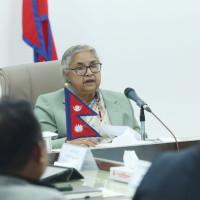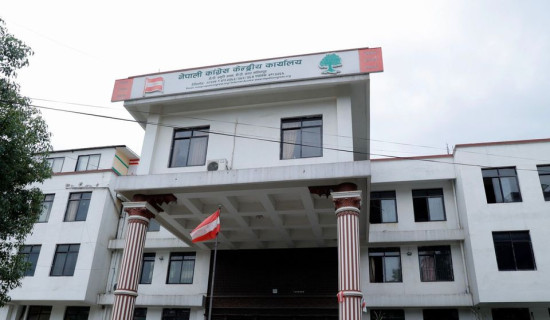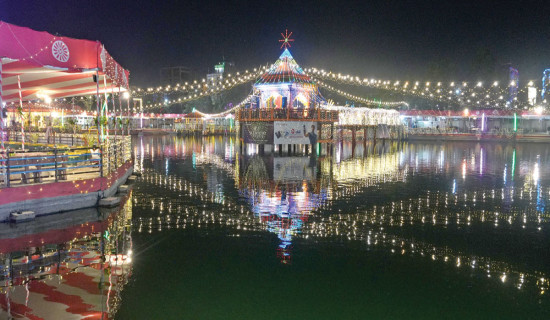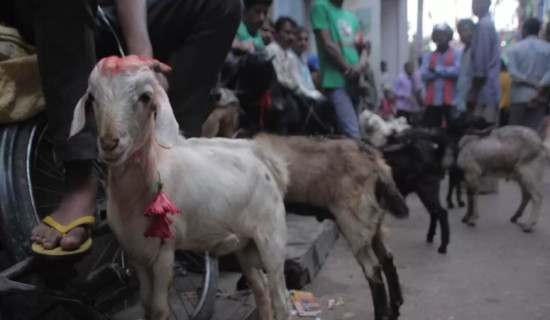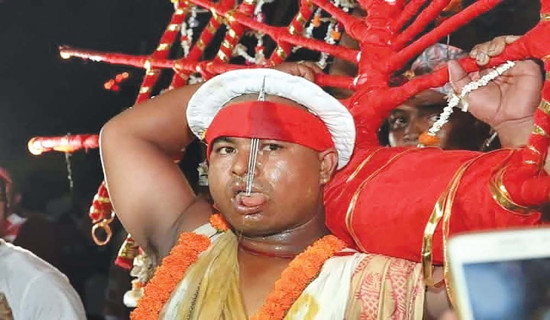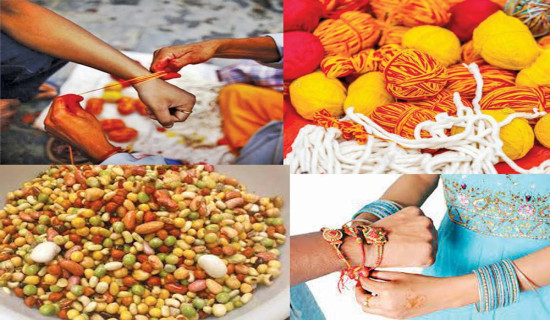- Monday, 15 December 2025
Quake-damaged heritage reconstruction on, albeit slowly
Kathmandu, May 25: On Tuesday this week, the 700-year-old Lakshmi Narasimha Temple was inaugurated. The temple, which had been completely destroyed in the 1934 earthquake, is located in Gahiti, Ward No. 4 of Bhaktapur Municipality. Bhaktapur Municipality completed the temple's reconstruction 91 years after it was damaged at a cost of Rs. 48.3 million—well below the estimated cost of Rs 77.7 million.
The Shilu Mahadev Temple in Bhaktapur, also damaged by the massive quake of 1934 earthquake, has already been fully reconstructed. Similarly, the Gagannath Mahadev Temple, which suffered the same fate, is currently under construction on Bhaktapur Durbar Square Premises. The Bishnu Temple at Hanumandhoka Durbar Square, also affected by the 1934 earthquake, is now undergoing reconstruction.
According to the Department of Archaeology (DoA), these temples are being rebuilt based on old photographs and documented evidence. These efforts represent progress being made in restoring the monuments damaged 91 years ago, while suggesting how slow the reconstruction progress is.
On April 25, 2015, a catastrophic 7.6 magnitude earthquake struck Nepal once again, killing around 9,000 people and destroying homes, government offices, hospitals, schools, religious structures, and monuments.
The scars left by the disaster a decade ago are still visible today—in the buildings awaiting reconstruction, the health and education institutions still supported by scaffolding, and the centuries-old structures in the Kathmandu Valley's three Durbar Squares that remain under renovation.
Progress in reconstruction
According to the Central Level Project Implementation Unit (Building), significant progress has been made in private housing reconstruction. Out of 834,821 beneficiaries, 743,249 have rebuilt fully or partially resilient homes. Of the 33,905 houses approved for retrofitting, 31,770 have been completed.
Acting Project Director Prakash Aryal of the Unit stated that only those beneficiaries who submitted final reconstruction reports to their ward office by the fiscal year 2023/24 were eligible for grants.
Agreements were signed with 834,821 people for housing reconstruction worth around Rs. 231.61 billion, and with 33,905 people for structural strengthening worth around Rs. 1.67 billion.
Additionally, the earthquake damaged 1,136 health posts, 414 government buildings, 216 security agency buildings, and 920 cultural heritage sites. According to the 62nd Annual Report of the Office of the Auditor General, 956 health posts, 407 government buildings, l,216 security buildings, and 815 heritage sites have been reconstructed over the years.
Of the 755 schools identified for reconstruction, 681 have been completed, while 74 schools and campuses are still under construction. School reconstruction has been supported by the Asian Development Bank, JICA, and various other donors since 2015. The project deadline has been extended to March 2027 for schools affected by the 2023 earthquake in Jajarkot and Bajhang districts.
Heritage reconstruction
The 2015 earthquake, which had its epicentre in Barpak, Gorkha, damaged or destroyed 920 heritage sites across Nepal. Of these, 815 have been reconstructed, according to the DoA.
One high-profile project, the new Dharahara Tower, has seen around 88 per cent physical progress with around Rs. 2.93 billion already spent. However, works related to the Mint Museum, tile and granite installations, and restoration of the old Dharahara water flow are incomplete. Land disputes with the Employees Provident Fund remain unresolved.
Although Prime Minister KP Sharma Oli inaugurated the new Dharahara during his previous stint in April 2021, the project—originally due for completion in 2020—remains delayed by several years. Raman Construction was awarded the contract on September 30, 2018 to complete the project till March 31, 2024.
According to Director General Saubhagya Pradhananga, if the budget is allocated as needed, remaining heritage reconstruction could be completed in three years. Around Rs. 6 million is estimated for each temple and monastery, and it needs Rs. 4 billion to complete the remaining damaged temples.
"The budget for heritage reconstruction has been decreasing year by year, which creates challenges in completing the reconstruction work within the stipulated timeframe," she said. Of the 215 monasteries reported damaged, only 23 have been reconstructed, while 192 are yet to be rebuilt.
World Heritage Site restoration
Among the 174 heritage structures damaged in the World Heritage Sites across Kathmandu, Bhaktapur, and Lalitpur, 134 have been reconstructed, according to Sandeep Khanal, Chief of the World Heritage Conservation Section of the DoA. Work on 16 is ongoing, while 24 have not yet begun. Additionally, 50 newly identified heritage sites are being added to the reconstruction list.
Khanal said “We are working with the goal of completing half of the ongoing projects during the current and upcoming fiscal year."
“When a massive number of heritage monuments were damaged by the earthquake at once, we did not have enough trained personnel to enforce in heritage reconstruction work and did not have required special wooden logs; it takes time to produce skilled manpower and to manage the wood,” he added.
The 62nd Annual Report of the Office of the Auditor General said that the Heritage Site Conservation Project has allocated budgets ranging from Rs. 100,000 to Rs. 50 million for 261 conservation programmes. However, 49 of these programmes have not been implemented, and Rs. 110 million remains unutilised due to implementation issues such as inadequate funding, unclear ownership or overlapping responsibilities with provincial governments.
According to the Auditor General's report, projects such as the Shiva Temple in Sarlahi, Chhetrpal Kalika Temple in Palpa, and Ganesh Temple in Panchkhal, among others, have not been implemented."
Notably, the reconstruction of the iconic Nautale Durbar (Nine-Story Palace) has been completed and was recently opened to the public. The Rato Machhindranath Temple in Bungamati, Lalitpur, is also nearing completion and will soon be ready to host the deity’s arrival this year.
However, disputes remain, including the release of water at the historic Sundhara site and the preservation of the remains of the old Dharahara. The Central Level Project Implementation Unit has yet to present a clear preservation plan.
Kasthamandap, a historic and iconic monument at the heart of Kathmandu, remains shrouded in controversy and uncertainty despite the completion of its reconstruction.
Severely damaged in the 2015 earthquake, the monument was officially reopened on April 4, 2022, by President Bidya Devi Bhandari. However, shortly after the reopening, the gates of the wooden structure were closed to the public and they have remained locked ever since.
District level reconstruction progress
In addition to the three districts of the Kathmandu Valley, heritage monuments in several other districts were severely damaged by the earthquake. According to the Department of Archaeology (DoA), restoration work has been completed on the following damaged heritage sites: three in Arghakhanchi, 12 in Okhaldhunga, 70 in Kavrepalanchowk, four in Kaski, five in Khotang, nine in Gulmi, 56 in Gorkha, four in Tanahun, 33 in Dolakha, one in Dhading, 23 in Nuwakot, two in Parbat, 12 in Palpa, one in Baglung, two in Bhojpur, five in Makwanpur, one in Myagdi, three in Rasuwa, 18 in Ramechhap, one in Rukum, nine in Lamjung, 38 in Sindhupalchok, four in Sindhuli, two in Solukhumbu, and one in Syangja.
Alok Siddhi Tuladhar, a heritage campaigner, expressed dissatisfaction with the government's approach to heritage reconstruction and retrofitting through tender bids. He criticised the involvement of donor agencies and the establishment of the National Reconstruction Authority, noting that local participation in the rebuilding of cultural heritage sites, such as temples and shrines, remains very low.
He further stated that raising funds from the public could be a better alternative than relying on donor agencies. Although it may take more time, this approach encourages community involvement, fosters a sense of ownership, and allows heritage to be passed down to future generations.
“The reconstructed temples and shrines may look beautiful from the outside, but no one knows how they were built inside because the community was not involved,” he said.
Overall, he noted that reconstruction work in Bhaktapur district appears successful due to the active involvement of the local community. This participation has helped create a strong sense of ownership over their heritage monuments.
He cited the recent involvement of locals during the inauguration of the Lakshmi Narasimha Temple in Bhaktapur as proof of their deep connection and pride in the temple.

